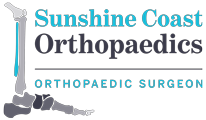Sprained ankles are the commonest sporting injury in the world. They are also a common injury in the workplace and account for a significant amount of time off sport and work.
The vast majority of sprains are a result of an inversion injury where the heel rolls inwards injuring the outside (lateral) ligaments. Injuries to the inside ( medial) side or combined injuries are less common and often require more major treatment.
I will discuss the common sprained ankle affecting the lateral (outside) ligament only.
Sprained ankles are traditionally graded into grade 1 (stretching of the ligament without major tearing), grade 2 (partial tearing) and grade 3 (complete tear). This grading bears no relation to the actual damage to the ligament and doesn’t help us in treatment ie treatment of grade 2 and 3 are the same in the initial case. Instead I use a simple classification. Mild sprain – the patient can walk on it straight away and usually doesn’t have much of a limp after a week. Major sprain – the patient can’t walk or can just hobble a little but requires crutches or a boot for a period. They usually still have a major limp at one week. The amount of bruising or swelling does not correlate with severity of the sprain. Patients who have sprained their ankles many times often have less symptoms than the first time sprained.
Initial treatment is always RICE (Rest, Ice, Compression and Elevation)
In mild sprain early mobilization with range of motion strength and balancing exercises. In major sprains the rehab program normally has to be delayed 1-2 weeks and will be over slower but gentle range of motion exercises non weight bearing can be started after a few days.
No matter the severity of the sprain I always treat initial injuries non operatively. Over 75% of ankle sprains can recover satisfactorily with an appropriate rehabilitation program. In patients with multiple recurrent sprains despite an adequate rehab program reconstruction may be needed.
If there is ongoing pain more than expected during recovery MRI may be indicated. This is not to look at the ligaments which are assessed by clinical examination but rather to look for other pathology apart from the ligaments such as a chipped cartilage (Osteochondral lesion of the talar dome) or occult fracture.
Ultrasound is only useful if you suspect tendon damage. Ultrasound assessment of the lateral ligaments does not help in clinical management or rehabilitation and is often confusing and anxiety causing. Previous damage to the lateral ligaments (even years earlier) will result in an abnormal appearance and will be reported incorrectly as acute damage. This is also the same for acute MRI of the ligaments, it does not help treatment decisions and can misdirect appropriate management.
A rehabilitation program to regain full range of motion, strength and proprioception (balance) is the most important treatment following a sprained ankle. If inadequate rehabilitation occurs then the patient is at risk of further sprains and more severe damage to the ankle and ligaments.
Reconstruction is reserved for patients who have failed a thorough rehabilitation program or have damaged their ligaments so severely the ankle is unstable with actives of daily living.
Often a brace is a useful adjunct in the initial return to work or sport. It should not be worn 24 hours a day but only during activities that endanger the ankle.
Overall recovery from a sprained ankle should be very good with an adequate rehabilitation program but occasionally further treatment is required for failure to recover adequate balance or injury to other structures such as a chipped cartilage.

Recent Comments